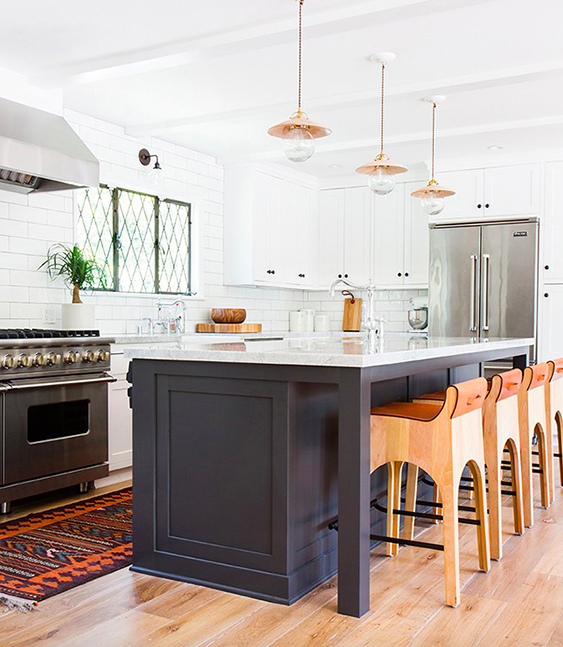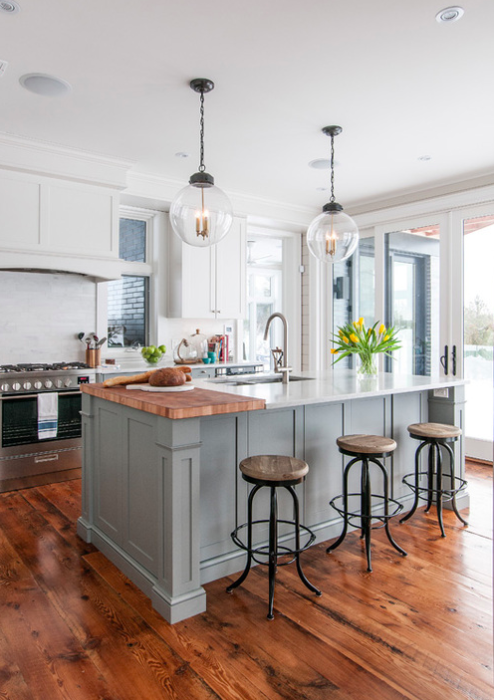Upgrade Your Kitchen with Trendy Kitchen Island Leg Solutions
Wiki Article
Exploring the Important Features of a Cooking Area Island Leg for Your Culinary Room
The kitchen area island serves as a main hub in any cooking space, and the selection of leg design is crucial in improving both its functionality and visual allure. Recognizing the important attributes of kitchen island legs-- consisting of material alternatives, design styles, and security elements-- can significantly affect the overall experience within the cooking area.Significance of Cooking Area Island Legs
Kitchen area island legs play an essential function in both the performance and looks of a cooking area area. They not just support the weight of the island but additionally enhance the total layout, adding to the cooking area's visual allure. The choice of legs can determine the design of the kitchen, be it contemporary, conventional, or rustic.Functionally, durable and properly created legs make certain stability, enabling the safe use the island for numerous tasks such as cooking, dining, or enjoyable. Strong legs avoid shifting and wobbling, supplying a reliable surface for everyday tasks.
In addition, the elevation and positioning of the legs can influence the convenience degree for those seated at the island. A well-considered elevation can suit bar stools or chairs, advertising a welcoming environment for gatherings.
Along with these functional factors to consider, cooking area island legs can act as a prime focus in the room (kitchen island leg). Ornamental or distinctively created legs can boost the design aesthetic, making the island a centerpiece. Therefore, choosing the appropriate kitchen island legs is vital for balancing kind and function in any kind of cooking room
Material Options for Legs
Selecting the ideal product for kitchen island legs considerably impacts both sturdiness and design. Usual product choices include steel, wood, and rock, each offering distinctive benefits.Wood is a preferred option due to its heat and flexibility. It can be easily tailored to match different decor designs, from rustic to contemporary. Woods like oak and maple offer excellent stamina and longevity, while softer timbers can be much more at risk to deterioration.
Steel legs are favored for their streamlined, modern visual. kitchen island leg. Stainless steel and light weight aluminum are not only durable but additionally resistant to rust and deterioration, making them suitable for kitchen settings. They can create a commercial appearance and are typically readily available in different coatings to complement various other cooking area elements
Rock legs, such as granite or marble, add an aspect of deluxe and stability. While much heavier than various other materials, they use remarkable longevity and can stand up to substantial weight. They may call for additional assistance to ensure appropriate balance.
Inevitably, the choice of product should align with both useful needs and the general style vision of the kitchen area space, making sure that the island legs boost both energy and appearances.
Design Designs to Consider
What style styles should be thought about when selecting legs for a kitchen area island? The option of leg style substantially influences the total visual of your culinary room. For a contemporary kitchen, minimalistic and smooth leg designs, such as stainless-steel or geometric shapes, can boost the contemporary appeal, providing a clean and uncluttered appearance.In contrast, conventional cooking areas benefit from traditional styles such as turned or sculpted wooden legs, which include warmth and character. These choices often feature detailed details that enhance classic furnishings. For a rustic setting, consider legs made from go to these guys recovered timber or wrought iron, which bring an organic, natural top quality to the area.
If you lean in the direction of an industrial style, durable steel legs with a distressed surface might be optimal, giving an edgy yet sophisticated touch. Furthermore, farmhouse design kitchens can integrate beefy legs that evoke a feeling of durability and homeliness.

Height and Security Factors
The height and security of a kitchen island are critical aspects that straight impact its performance and customer experience. An optimal cooking area island leg should supply enough height to fit a selection of jobs, from food preparation to laid-back eating. Typically, kitchen area islands stand in between 36 to 42 inches high, aligning with conventional counter and bar elevations. This array guarantees comfort for individuals while executing various activities, therefore improving the total use of the space.Stability is just as crucial, particularly as cooking area islands usually offer as focal points in cooking atmospheres. The leg's attachment to the island's base have to be safe and secure, making sure durability and resilience versus the wear and tear of everyday use.
Modification and Accessories
Customization alternatives and accessories for kitchen island legs can dramatically improve both the visual charm and functionality of the area. Homeowners can pick from a variety of products, including rock, wood, and steel, allowing for smooth assimilation with existing kitchen area style. The option of coating-- be it a natural tarnish, paint, or powder finish-- further customizes the appearance, ensuring that the island matches the total design style.Along with material and surface, home owners may likewise discover the incorporation of accessories such as ornamental braces, adjustable feet, or integrated shelving. Braces can supply additional assistance while adding check out this site to a modern-day or rustic aesthetic. Adjustable feet are especially valuable for uneven flooring, making sure the island continues to be stable and level, which is vital for both safety and security and usability.

Verdict
To conclude, cooking area island legs offer an important role in offering security and boosting the overall aesthetic of the culinary area. The option of materials and design styles adds to both capability and aesthetic appeal, while considerations of height and stability make sure sensible use. Personalization alternatives and devices can boost the cooking area island, making it a distinct focal factor within the home. Thus, careful consideration of these features is important for an efficient kitchen area style.The cooking area island offers as a main hub in any culinary room, and the selection of leg layout is essential in improving both its performance and visual appeal. Recognizing the crucial attributes of cooking area island legs-- including material alternatives, layout styles, and security aspects-- can considerably impact the overall experience within the cooking area.Kitchen area island legs play an essential role in both the capability and appearances of a cooking area area.What design styles should be taken into consideration when selecting legs for a kitchen island?In verdict, kitchen area island legs serve an important function in providing security and enhancing the total aesthetic of the cooking area.
Report this wiki page